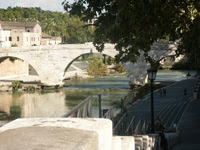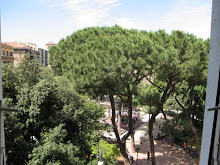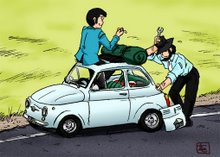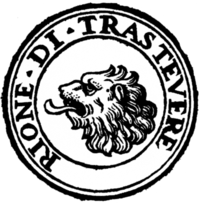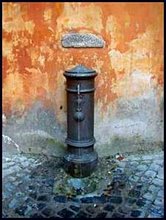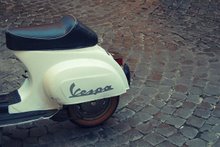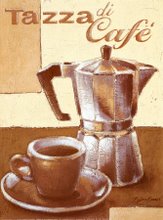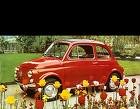 The church of Sant'Angelo in Pescheria is one of Rome's oldest churches and still only partly excavated. It stands behind the Octavia Portico (in the Ghetto) and is one of the most interesting examples in Rome of how churches and houses were built using existing ruins of temples.
The church of Sant'Angelo in Pescheria is one of Rome's oldest churches and still only partly excavated. It stands behind the Octavia Portico (in the Ghetto) and is one of the most interesting examples in Rome of how churches and houses were built using existing ruins of temples. (Left: the window of the house has a view on the rear colonnade of the Portico. Right: a large fragment of the temple was used for many years as a yardstick for measuring the size of the fish)
Stefano III founded the church in the 8th century; it has been rebuilt on several occasions since then. The church was also the scene of the gathering of men by Cola di Rienzo in the mid-14th century before they went off to occupy the Campidoglio and re-establish the Roman Republic.
In the 12th century the church took its current name "in Pescheria" from the curious tradition that allowed the 'Conservatori' the right to have the heads of the longest fish from the nearest fish open market!




